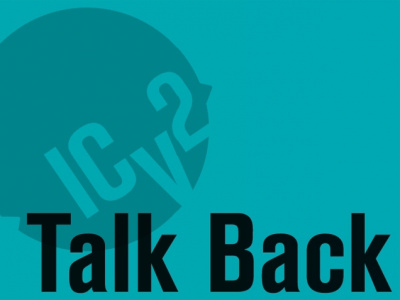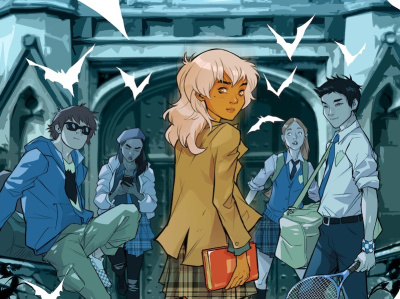Robert Beerbohm of Robert Beerbohm Comic Art in Fremont, Nebraska saw comments from other retailers, including Buddy Saunders (see 'Buddy Saunders of Lone Star Comics on the State of Comics'), and suggests that the industry would find long-term benefit from actively pursuing younger readers.
I am probably one of the dinosaurs still active in this business, and maybe I have no place in the pantheon to make commentary on the current state of affairs in the new comic book business.
I co-opened my first comic book store, The Berkeley Comic Art Shop, located on
During the 1970s, many of us early store owners felt we were on a mission from the Gods to rehabilitate general popular (mis)perceptions and teach that comics were OK to read and to be seen in public with them. The social stigma perpetuated by the 1954 advent of the Comics Code made it seem like a comics reader was mentally challenged, socially inept, and unable to relate to the world around him.
That was the perception. Perception, as the old saying goes, is reality. A comics reality.
When we opened that first store--back when there were less than two dozen comic book stores in existence in America--the concept of a place to come acquire comics for all ages and stripes was alien. (The
Comicons were held mostly on or near college campuses. The shows were used to introduce people to collecting and reading comics. The mega-bucks aspect of the back issue market was soon to be upon us though, which fueled the coming direct market speculation which drove the 1980s.
As the 1980s unfolded, as the Direct Market took off and expanded, as magazines like Rolling Stone reviewed works by Alan Moore, Frank Miller, and Art Spiegelman, the common mantra became 'Comics aren't just for kids anymore!'
The DM was never meant to replace the ID distribution system, only to complement some of its drawbacks. But as the DM grew--at one time there were 19 Marvel Direct Distributors spread around the country, fueling the supply chain via many other Sub-Distributors--new ground continued to be broken, expanding a market place being built on what proved to be a faulty foundation.
The affidavit-return ID system for distributing comic books, fraught with fraud, slowly withered and went away. It was being replaced by a system which was even more prone to disaster for the comic book business.
As the DM continued to grow exponentially, as the number of comic book stores swelled, as the speculation kept climbing to new unheard of heights, as thousands of comic book stores opened within only the confines of the DM in which to acquire product to turn over, as many of these same new store owners only ordered mainly what their in-store subscribers wrote down by pre-ordering, as the speculation movement dictated the only good comic book was one as perfect as possible, something was lost on the way to the bank.
Lost was the concept of reading comic book stories, by and large. Bagged and boarded, near mint to mint was the rule of the day. Lost also were store owners actively seeking to expand a simple concept: growing new comics readers at an early age.
Remember, 'Comics aren't just for kids anymore?'
I do not think there has been any serious push toward building a kids market for comics since the days Eastman & Laird introduced us to the Teenage Mutant Ninja Turtles and Marvel tried its ill-fated Star comics line among other attempts, the latter not supported very much by comic book store owners more interested in the narrow focus of concentrating on Perfect Condition superhero comic books
What we witnessed from the early 1980s into the early 1990s was the loss of a generation of comics readers. They were lied to by thousands of speculators in a huge Ponzi scheme which one day had to end. And it was a spectacular crash and burn.
It has been 13 years since I got out of the madness of being a slave to New Comic Book Day with absolutely perfect condition copies being the only ones you could sell, around the time Superman was 'killed,' the subject of a huge media propaganda blitz by the Time-Warner machine. I knew the false foundation would tumble once enough people saw the Emperor's New Clothes.
In the mid-1990s I got off into researching the origins of the comics business in America; pushing our collective history of sequential panel storytelling back to 1842, presented each year in The Overstreet Comic Book Price Guide for a decade now. Our 165-year heritage is full of thousands upon thousands of comic strips. Most of the time the comics I have researched reflect the times in which they are created. At many times comics in
During these years away from running comic book stores, I have watched valiant efforts to re-grow the comic book business following the crash of the early 90s.
Free Comic Book Day is a nice idea, but one which store owners should contemplate having every day they are open. Every time a youngster comes in, usually in tow with his adult comic collecting parent these days, free samples should be thrust into his or her hands.
Publishers should contemplate issuing series which are complete as stand-alone books, not directly continued issue after issue. You will not build the casual reader by requiring someone to have to buy issue after issue to follow the soap operas. New readers find it troubling to start anything which catches their eye if they know they HAVE to buy the following issue, and the one after that, and the one after that, etc.
In deference to the thoughts of Buddy Saunders, whom I have known for close to 40 years now, and whose intentions are pure, I am sure, I do not think it matters much any more if superheroes are portrayed as happy or not.
Beginning about 20 years ago, the youngest readers were ignored, or worse, chased away from getting into comic book reading on a regular basis. They are not here now, by and large, as that 10-year-old who only had maybe a dollar to spend is now 30 years old or more and he/she is not your customer.
The customer base for reading super hero comic books is dying off. New computer generated technologies are replacing 'old' media. How do you say 'dime novel?'
The opinions expressed in this Talk Back article are solely those of the writer, and do not necessarily reflect the views of the editorial staff of ICv2.com.







